The hype is out of this world, but mining in space won't save the Earth
Tuesday, 31 January 2023 17:10
We know the world must move to cleaner energy sources to head off the worst effects of climate change, but the technology required for the transition is very mineral-intensive. So where will all these resources come from?
Many in the space industry are pointing beyond Earth. Asteroids and the Moon are thought to contain abundant platinum group elements needed in the transition, as well as other valuable resources. This has prompted a push towards commercial mining in outer space.
California-based company AstroForge is the latest company to make strides into the space mining rush. The company last week announced plans to launch two missions this year—one to refine platinum from a sample of asteroid-like material, and another to find an asteroid near Earth to mine.
Proponents of mining in space often point to the potential benefits for Earth and its people. But how certain are these benefits? Our research casts doubt on many of them.
A very risky bet
Space mining supporters often claim a bounty of space resources exist, and exploiting them would generate trillions of dollars in mining revenue.
Researchers complete first real-world study of Martian helicopter dust dynamics
Tuesday, 31 January 2023 16:56
Mars is a dusty planet. From tiny dust devils to vast storms that shroud the planet, dust is a constant challenge for research missions. That was especially true for Ingenuity, the rotorcraft that since February 2021 has been exploring Mars alongside NASA's Perseverance rover. Now, researchers at Stevens Institute of Technology, the Space Science Institute, and the Jet Propulsion Laboratory have completed the first real-world study of Martian dust dynamics based on Ingenuity's historic first flights on the Red Planet, paving the way for future extraterrestrial rotorcraft missions.
The work, reported in the Journal of Geophysical Research: Planets, could support NASA's Mars Sample Return Program, which will retrieve samples collected by Perseverance, or the Dragonfly mission that will set course for Titan, Saturn's largest moon, in 2027.
New research computes first step toward predicting lifespan of electric space propulsion systems
Tuesday, 31 January 2023 16:42
Electric space propulsion systems use energized atoms to generate thrust. The high-speed beams of ions bump against the graphite surfaces of the thruster, eroding them a little more with each hit, and are the systems' primary lifetime-limiting factor. When ion thrusters are ground tested in an enclosed chamber, the ricocheting particles of carbon from the graphite chamber walls can also redeposit back onto the thruster surfaces. This changes the measured performance characteristics of the thruster.
Researchers at the University of Illinois Urbana-Champaign used data from low-pressure chamber experiments and large-scale computations to develop a model to better understand the effects of ion erosion on carbon surfaces —the first step in predicting its failure.
"We need an accurate assessment of the ion erosion rate on graphite to predict thruster life, but testing facilities have reported varying sputtering rates, leading to large uncertainties in predictions," said Huy Tran, a Ph.D.
Investigations reveal more evidence that Mimas is a stealth ocean world
Tuesday, 31 January 2023 15:35
China’s CAS Space outlines rocket series, inaugurates manufacturing facility
Tuesday, 31 January 2023 13:09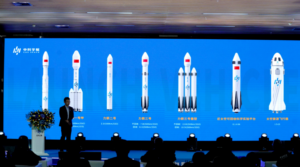
A Chinese space launch company has outlined its plans for a series of solid and reusable rockets for launch services and space tourism and opened a new industrial base.
Xplore announces first launch of remote-sensing smallsat
Tuesday, 31 January 2023 13:00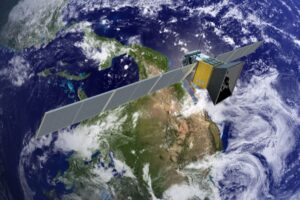
Xplore, a startup based in Redmond, Washington, announced Jan. 31 it was granted a remote-sensing license for the company's first mission to low Earth orbit.
The post Xplore announces first launch of remote-sensing smallsat appeared first on SpaceNews.
Capella Space establishes new business unit focused on U.S. defense market
Tuesday, 31 January 2023 13:00
Capella Space announced Jan. 31 it is forming a new business unit, Capella Federal, that will offer “increased Earth observation access to select U.S. defense customers.”
The post Capella Space establishes new business unit focused on U.S.
Capella Space establishes new subsidiary focused on U.S. defense market
Tuesday, 31 January 2023 13:00
Capella Space announced Jan. 31 it is forming a new business unit, Capella Federal, that will offer “increased Earth observation access to select U.S. defense customers.”
The post Capella Space establishes new subsidiary focused on U.S.
NASA hits limits of space station utilization
Tuesday, 31 January 2023 12:12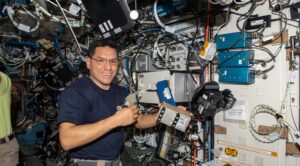
NASA has effectively reached full utilization of the International Space Station given limitations on crew time and the ability to get cargo to and from the station, an agency official said Jan.
First martian sample depot complete
Tuesday, 31 January 2023 12:02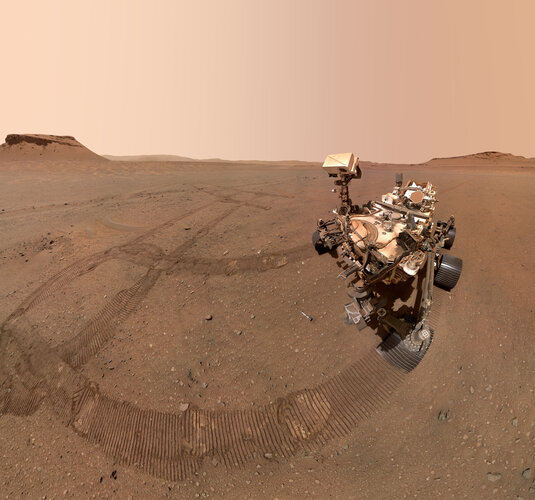 Image:
First martian sample depot complete
Image:
First martian sample depot complete House passes commercial remote sensing bill
Tuesday, 31 January 2023 11:57
The House Science Committee scored a bipartisan victory Jan. 30 with the passage of a minor commercial remote sensing bill even before the committee’s first meeting of the new Congress.
The post House passes commercial remote sensing bill appeared first on SpaceNews.
New AFRL mission area targets Space Space Science and Technology needs
Tuesday, 31 January 2023 10:14 Air Force Research Laboratory, or AFRL, Commander Maj. Gen. Heather Pringle announced new space mission area leads, or MAL, in December 2022. With the growing national space community, she said, adding space MALs will help support the range of customers in the expanding ecosystem.
"The team will build a critical communication path with the Space Force, and I am certain they will add consid
Air Force Research Laboratory, or AFRL, Commander Maj. Gen. Heather Pringle announced new space mission area leads, or MAL, in December 2022. With the growing national space community, she said, adding space MALs will help support the range of customers in the expanding ecosystem.
"The team will build a critical communication path with the Space Force, and I am certain they will add consid Lockheed Martin to launch first demo of new mid-size bus
Tuesday, 31 January 2023 10:00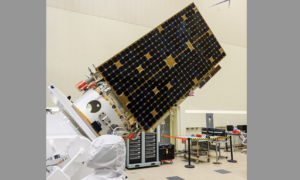
Lockheed Martin plans to launch the first demonstration mission of its new LM 400 mid-sized satellite bus in 2023.
The post Lockheed Martin to launch first demo of new mid-size bus appeared first on SpaceNews.
Deep fractures and water-carved valleys
Tuesday, 31 January 2023 10:00
Mars displays fascinating geology everywhere you look – and nowhere is this more true than in the fractured, wrinkled ground seen in this image from ESA’s Mars Express.


 Image:
Final martian drop
Image:
Final martian drop